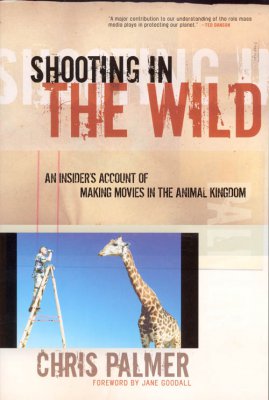Book Review: Shooting in the Wild - An Insider’s Account of Making Movies in the Animal Kingdom

This book is about the ethics of nature filmmaking, and the drawing of proper boundaries, and as such has a real impact on still nature photography as well. As nature films and TV shows proliferate and become profitable, there is little external regulation of what is ethically allowable. The advent of a culture that seeks instant gratification and demands sensationalism and risk taking as a part of entertainment, has encouraged unscrupulous film editors to bend (and increasingly break) the rules that might suggest that the animals and environment’s well-being is paramount. Chris Palmer’s mission with this book is to attempt to challenge this. Palmer is a veteran film producer and educator, with twenty-five years of experience and over 300 hours of original programming in a rapidly changing industry.
The content of the book was, for me, eye-opening. It may be my naïvety, but I was surprised to read about the existence of game farms from which producers can rent exotic animals to release in artificial sets to re-create natural scenes and the use of tame, trained animals. Some producers even “stage” events, such as introducing two predators in enclosures to encourage a violent reaction. The “hands-on” approach to wildlife filmmaking, where the animals are handled repeatedly for entertainment, shows little regard for the animal. These actions are often justified by the filmmakers are being acceptable as the programs have a conservation or environmental message-the “end justifies the means”. Steve Irwin’s death produced revenge attacks on stingrays, which seems to suggest that the conservation message he espoused wasn’t understood. The key point is that there’s no guarantee that these producers care more about nature than they do about their bottom line.
By contrast, Palmer holds up as exemplars some of the filmmakers who do things properly: respecting nature, disclosing when scenes are manufactured, and emphasizing the importance of conservation - all while telling a story and captivating an audience. He lists Howard and Michelle Hall as among those who “do it right”.
Funding within the film industry has always been an issue, in that money provided for a production will often have strings attached either in terms of exposure for a group (advertising) or in terms of producing a fast profit. Palmer lists examples of some backers that have had an undue influence in the editorial decisions and also those who have trusted in their production teams.
The book finishes with a suggested code of conduct for wildlife filmmakers, much of which applies to still photographers too. He lists eight steps for reform of the industry:
“1. Start with a statement of intent.
2. Work closely with reputable scientists.
3. Make conservation films that entertain.
4. Use new media effectively.
5. Disclose how the film was made and establish an ethics ranking system.
6. Practice green filmmaking.
7. Diversify the wildlife filmmaking community.
8. Improve ethics training and guidelines.”
I think this is an important book. The nature film producers who are ignoring their subject’s welfare break a covenant not only with their subjects, but also with their viewers. The majority watching programs would not wish harm to have befallen the animals they are watching whilst being filmed. I certainly was unaware of some of the techniques Palmer catalogs, and have been uncomfortable with the nature of some of the more “hands on” type productions. Although the book is aimed primarily at the film industry, it has a great deal of resonance for still photographers. The recent retraction of the Veolia Environment Wildlife Photographer of the Year due to the image being one of a captive animal (and it being heavily photo-shopped) is a graphic example of this.
The book is 223 pages, has black and white photographs, and is available from Amazon and most other booksellers.